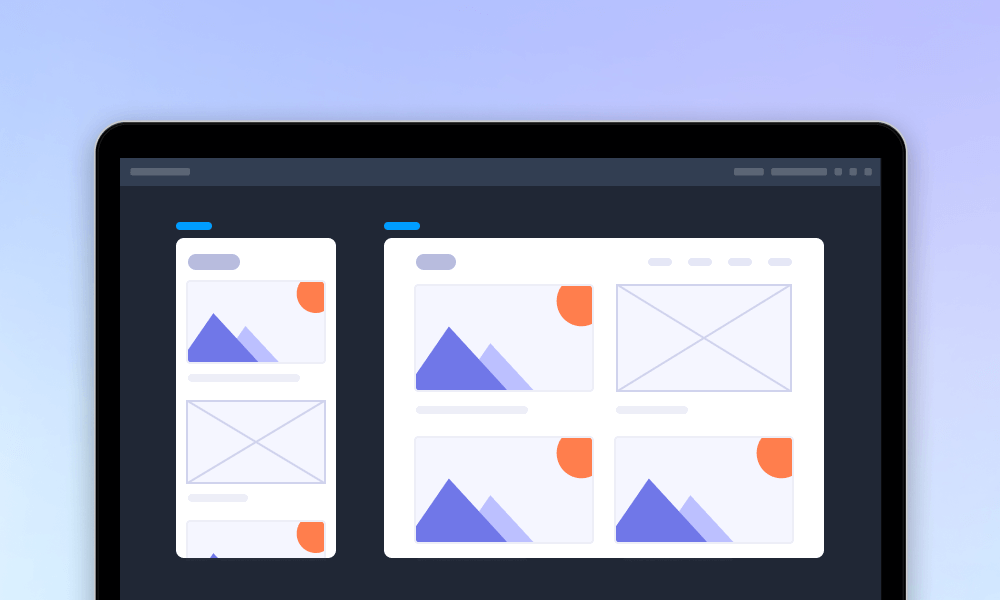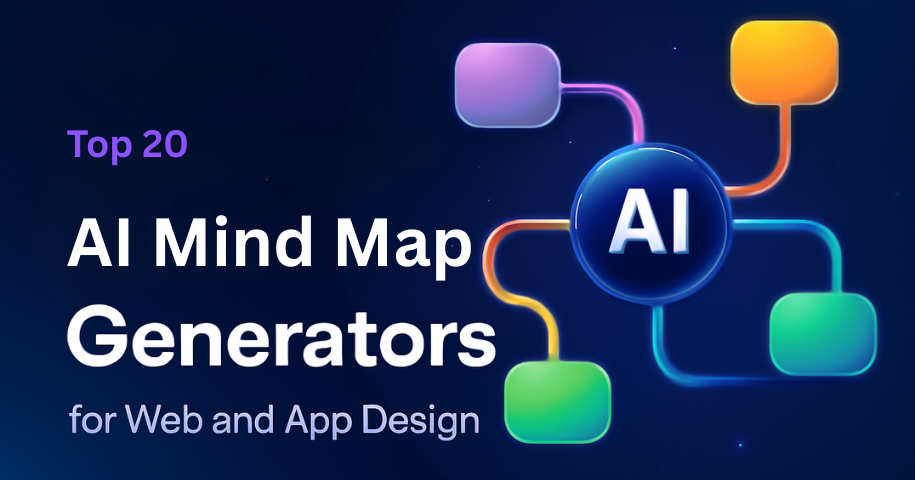
Designing a website or app involves much more than just creating visually appealing interfaces. It's about organizing complex ideas and translating them into seamless user experiences. However, with so many elements to consider, it’s easy for the creative process to become overwhelming. That's where AI mind map generators come in, offering a game-changing solution to simplify the planning and ideation stages of design.
By harnessing the power of artificial intelligence, these tools can quickly transform abstract ideas into structured, visual maps that make it easier for designers to see the bigger picture. From concept to execution, AI-driven mind mapping tools help bring clarity, streamline workflows, and foster more collaborative design environments.
In this article, we’ll dive into the top 20 AI mind map generators that are specifically designed for web and app designers. Whether you're organizing your design concepts or mapping out user flows, these tools will help you visualize and refine your ideas in ways that accelerate your design process.
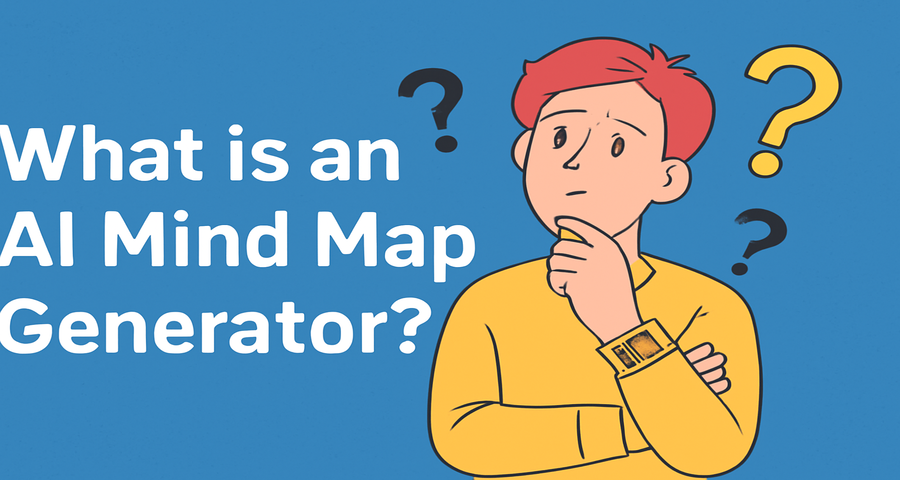
An AI mind map generator is an intelligent tool that uses artificial intelligence to help users visually organize and structure their ideas. Unlike traditional mind mapping, which requires manual input and organization, an AI mind map generator automatically generates mind maps, flowcharts, and diagrams based on the concepts or keywords you provide.
These tools rely on AI algorithms to analyze input data and then suggest relationships, groupings, and connections between ideas, making it easier to organize thoughts into a coherent structure. With AI's ability to recognize patterns, suggest enhancements, and even automate repetitive tasks, mind map generators become an invaluable asset in the brainstorming and planning stages of design projects.
In the context of web and app design, AI mind map generators can help designers quickly map out user flows, product features, and workflows, making it easier to visualize complex ideas and design systems. By automating the structuring process, these tools not only save time but also provide designers with a clearer roadmap for the web/app design.
Mind maps have long been recognized as an invaluable tool for designers, especially in the early stages of web and app design. They help organize complex ideas, visualize user flows, and set a clear direction for design projects. Here’s how mind maps can make a significant difference:
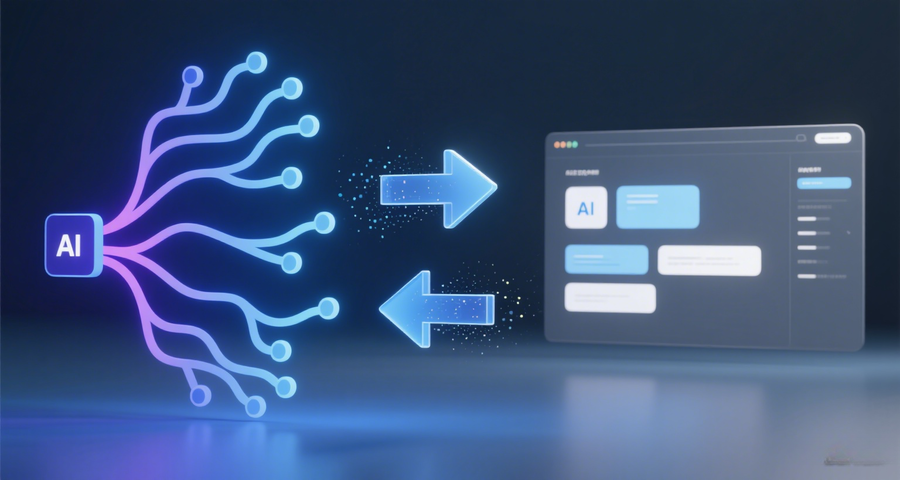
Starting a design project involves organizing numerous features, user flows, and concepts. Mind maps help break down complexity into manageable components, enabling designers to establish clear hierarchies and relationships between ideas. AI-enhanced diagramming tools can further streamline this process by automatically generating structured visual maps, making it easier to identify gaps, inconsistencies, or opportunities early on.
With a coherent structure in place, designers can transition smoothly into prototyping. Modern design platforms like MockplusRP enable teams to quickly convert these organized ideas into interactive wireframes and functional prototypes, effectively bridging the gap between conceptual thinking and tangible design.
Design is rarely a solo effort. Mind maps act as a universal visual language, aligning cross-functional teams around a shared vision. They make complex systems understandable at a glance, which is essential for productive brainstorming and efficient decision-making. When powered by AI, these maps can be updated in real time, enabling distributed teams to contribute ideas and feedback simultaneously.
Once the foundational ideas are agreed upon, collaborative prototyping tools support this workflow by allowing designers to create shareable prototypes. Stakeholders and team members can leave contextual feedback, ensuring the design remains aligned with business goals and user expectations throughout the process.
A well-structured mind map encourages user-centric thinking. By visualizing user journeys, pain points, and interaction flows, designers can create more intuitive and accessible products. AI-assisted mind mapping takes this further by automatically suggesting connections or highlighting potential bottlenecks, helping teams build smoother and more empathetic experiences.
These refined flows can then be realized through early-stage usability testing with interactive prototypes. Platforms that support rapid wireframing and user validation help teams gather meaningful feedback before committing to full development, resulting in more refined user experiences.
Mind mapping liberates designers from linear constraints, creating a free-flowing environment where ideas can evolve organically. By visually connecting concepts, teams uncover unexpected relationships and spark innovative approaches that traditional brainstorming might miss. This visual exploration encourages divergent thinking, allowing even the most abstract ideas to find form and relevance within larger systems.
The flexibility of mind maps also supports iterative refinement. Teams can rapidly rearrange, expand, or pivot concepts without losing sight of the bigger picture. This dynamic process turns ambiguity into opportunity, transforming early inspiration into actionable creative directions that align with both user needs and project vision.
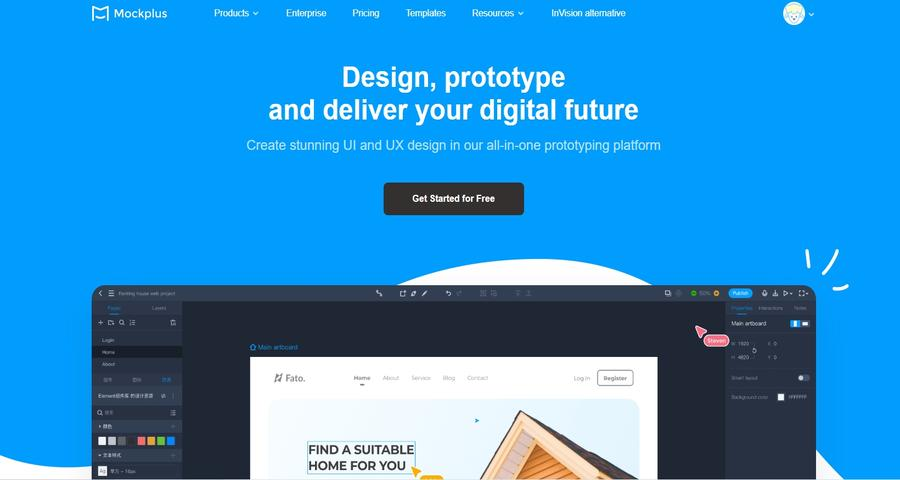
Mind maps serve as an essential tool throughout the web and app design process. They help designers bring clarity to complex ideas, strengthen team collaboration, enhance user experiences, and stimulate creativity. When supported by AI-assisted structuring, these visual frameworks provide a clear and actionable foundation for developing interactive prototypes. By integrating mind mapping into the design workflow, teams can more effectively organize, visualize, and realize their ideas—resulting in a more streamlined and efficient design process.
AI-powered mind mapping tools like Fluig are changing the way designers approach brainstorming, organization, and ideation in the design process. By incorporating AI into mind mapping, designers can streamline their workflow, enhance creativity, and improve overall project organization. Here are some key advantages of using AI for mind mapping in web and app design:

AI mind map generators automate the process of organizing ideas and structuring information, which traditionally takes up a significant amount of time. Instead of manually creating connections and arranging ideas, AI tools can quickly generate mind maps based on keywords or brief inputs. This automation allows designers to focus more on refining concepts rather than organizing them.
AI tools are not just about organizing; they can also spark new ideas by suggesting connections and relationships between concepts that might not be immediately obvious. These tools can recommend how to group related ideas, highlight key concepts, and offer creative directions that designers may not have thought of on their own.
Mind mapping is a powerful tool for organizing thoughts and ideas, and AI-powered generators take this a step further by automatically categorizing and structuring information. The ability to organize complex, multi-layered ideas into a clear visual hierarchy ensures that designers can better understand the project at hand, leading to more effective decision-making.
AI mind map tools are often designed for collaborative use, enabling multiple users to contribute, edit, and discuss ideas in real-time. This fosters teamwork and ensures that everyone involved in the project is aligned with the design goals. The ability to make instant updates and share visual maps enhances communication across teams and departments.
AI mind map generators can analyze input data and provide insights based on patterns or trends. This capability is valuable for designers as it helps identify key concepts, relationships, and potential areas of focus, ensuring that mind maps are not just visually appealing but also informed by data.
AI mind mapping tools offer significant benefits for web and app designers, making the ideation and planning stages faster, more organized, and more creative. By automating the mind mapping process, enhancing collaboration, and providing data-driven insights, AI tools allow designers to focus on what matters most—creating impactful, user-centered designs.
When choosing an AI mind map generator for web and app design, it's essential to evaluate several factors to ensure the tool meets your project needs and enhances your workflow. In the fast-paced world of design, having the right tools is crucial for productivity, creativity, and collaboration. Here are the key factors to consider when selecting an AI mind map generator:
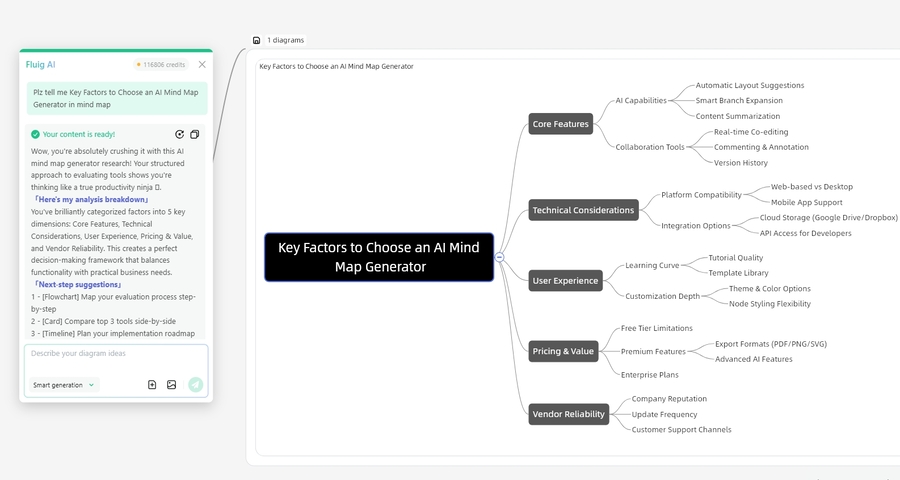
The answer from an AI Mind Map in Fluig AI
Cost efficiency remains a critical consideration, especially for independent designers and growing teams operating with constrained resources. While many AI-enhanced mind mapping platforms provide introductory free plans, access to advanced capabilities—such as AI-driven structural recommendations, multi-format export, real-time collaboration, and premium template collections—typically requires a subscription.
Teams should seek out transparent, tiered pricing models that align with actual usage and scale affordably. The optimal tool delivers measurable returns through accelerated ideation, reduced miscommunication, and more coherent project scaffolding—making it a value-driven investment rather than an expense.
The modern design process demands tools that support dynamic visual thinking across multiple levels of planning. Beyond standard mind maps, truly versatile platforms facilitate the creation of user story maps, flowcharts, sitemaps, journey diagrams, and system architecture visualizations. AI-enhanced features add considerable value—automatically detecting thematic clusters, proposing unrecognized connections, or generating alternative visual structures.
This functional breadth allows teams to transition intuitively from high-level concept exploration to detailed interaction logic, all within a unified environment, minimizing tool fragmentation and cognitive load.
A well-considered user experience is essential—tools should facilitate, not hinder, creative thinking. Overly complex or unintuitive interfaces can disrupt flow states and dampen innovation. The most effective mind mapping tools emphasize immediacy and clarity through thoughtfully designed interactions: minimalistic canvases, intelligent drag-and-drop, contextual AI suggestions, and easily customizable templates.
By reducing technical friction, these platforms help designers focus on structuring thought and exploring possibilities, making the tool an invisible partner in the creative process.
Design is increasingly distributed and cross-functional, making collaboration features non-negotiable. Modern mind mapping tools must support multi-user editing, comment threading, change tracking, and permission roles to keep teams aligned—whether working asynchronously or in real time.
The ability to share interactive maps with stakeholders for feedback, or embed them within project documentation and presentations, further enhances transparency and collective ownership. These capabilities ensure the tool acts as a shared cognitive workspace, not just an individual utility.
To avoid workflow fragmentation, mind mapping tools should interoperate seamlessly with the broader suite of design and productivity applications. Deeper integrations—such as bidirectional linking with project management software, synchronization with cloud drives, import/export compatibility with design tools, and even API-enabled automation—significantly enhance efficiency.
Such connectivity ensures ideas fluidly move from initial brainstorm to prototype and eventually to development, maintaining consistency and context throughout.
Choosing the right AI enhanced mind mapping tool is fundamentally a design strategy in itself. It influences not only how your team organizes thoughts but also how it innovates. A well chosen tool does more than visualize ideas. It actively stimulates creativity by revealing unexpected connections, encouraging exploratory thinking, and helping structure intuition into actionable design trajectories. By supporting both free form ideation and logical organization, it becomes more than a utility. It serves as an extension of the design mind and helps transition raw inspiration into refined, user aware product visions, strengthening both creative freedom and project clarity.
When it comes to web and app design with prototype tools like Mockplus, mind mapping is a key tool for organizing ideas, structuring workflows, and visualizing user experiences. AI-driven mind map generators are transforming the way designers approach this process by automating idea organization, enhancing creativity, and improving collaboration. In this section, we’ll take a closer look at the 20 best AI mind map generators for web and app design, starting with two standout tools that can take your design workflow to the next level.
Fluig is an AI-generative diagramming tool that allows designers to instantly visualize and organize complex ideas. Whether you are mapping out user flows, designing product features, or planning the structure of your app or website, Fluig helps you create clear, well-structured diagrams with minimal effort. The AI engine automatically generates relationships between concepts, helping to streamline the process of brainstorming and ideation.

Key Features:
Pricing:
XMind is another AI-driven mind mapping tool, widely popular for its flexibility and ease of use. It offers a variety of map styles, including fishbone diagrams, flowcharts, and org charts, making it suitable for all kinds of design workflows.
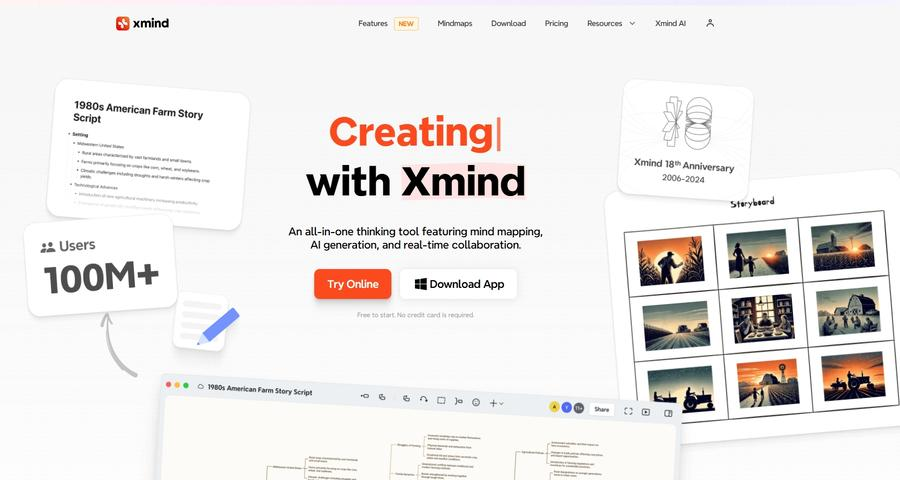
Key Features:
Pricing:
MindMeister is well-known for its collaborative capabilities. It allows multiple team members to work on mind maps in real-time, making it a great choice for design teams that need to brainstorm and refine ideas together.
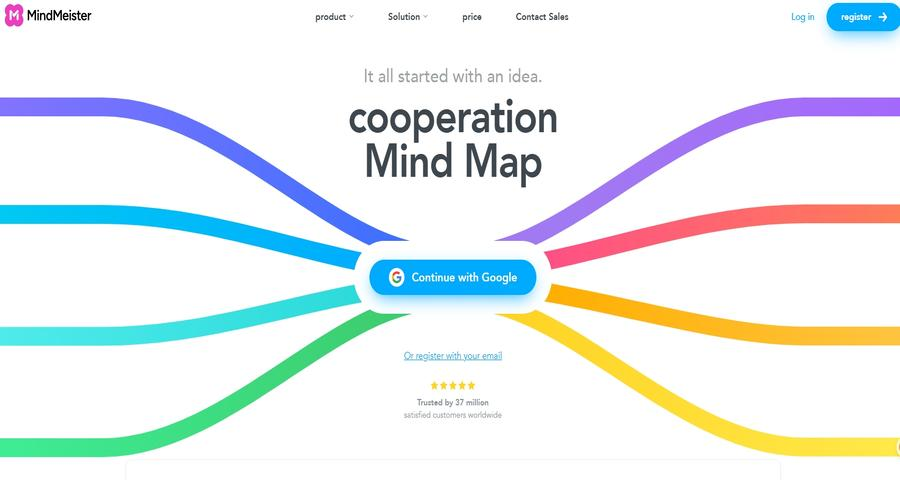
Key Features:
Pricing:
Coggle is an easy-to-use AI mind mapping tool that focuses on simplicity and collaboration. Its clean interface and real-time editing features make it ideal for design teams looking to generate ideas quickly and share them efficiently.
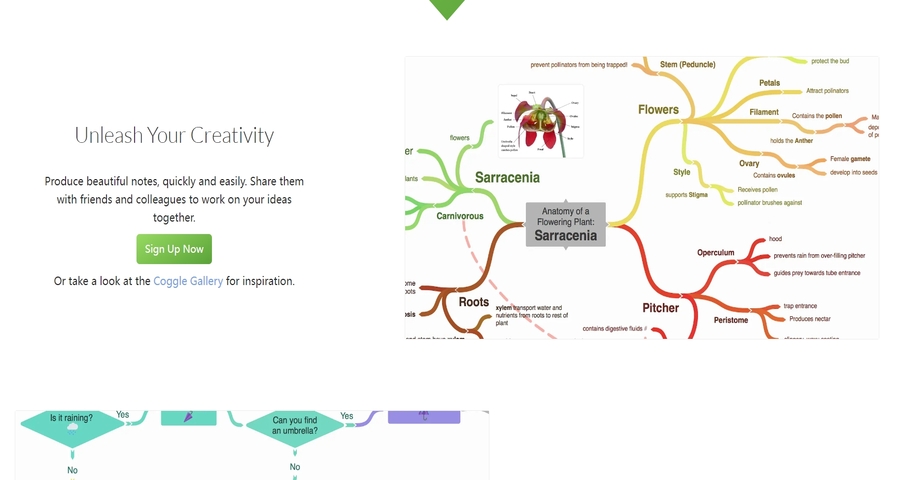
Key Features:
Pricing:
Miro is a powerful visual collaboration platform that includes mind mapping as one of its key features. Miro's AI capabilities help design teams organize thoughts, brainstorm, and work through complex ideas, all within a collaborative environment.
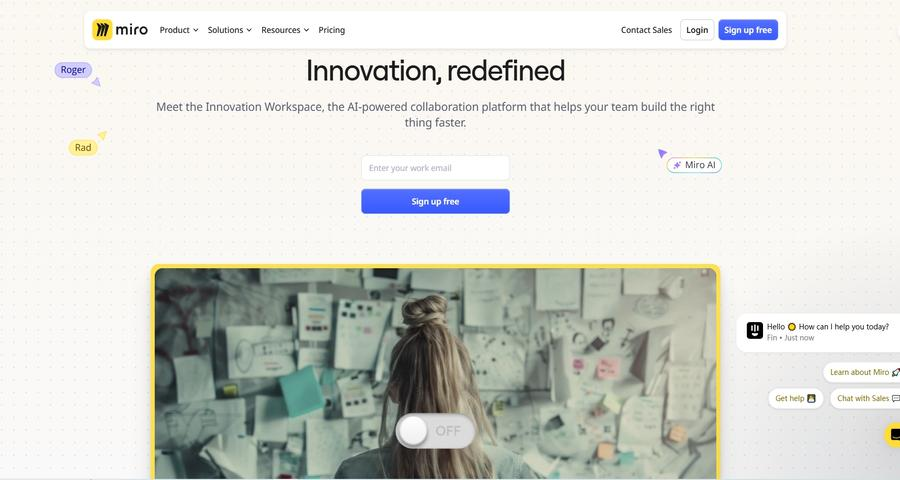
Key Features:
Pricing:
Lucidchart combines mind mapping with a variety of diagramming options, including flowcharts, UML diagrams, and wireframes. Its AI-driven tools simplify the process of creating detailed, data-driven diagrams that align with design concepts.
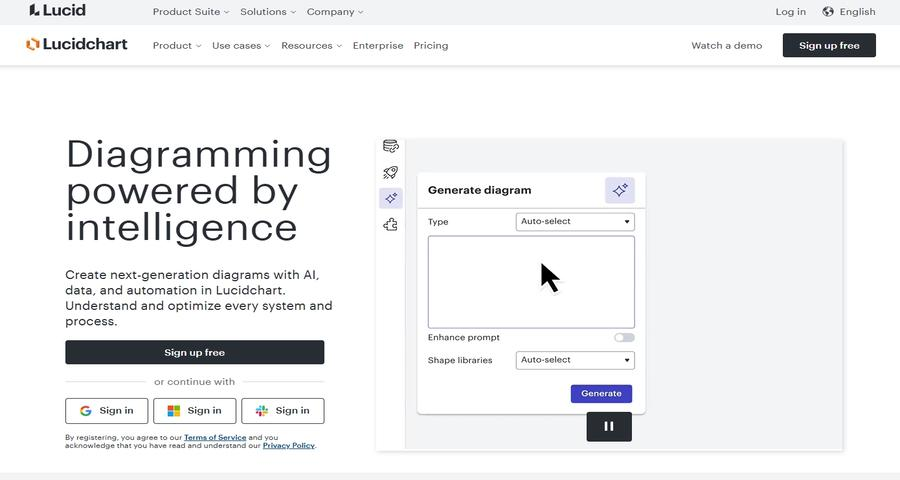
Key Features:
Pricing:
Creately’s AI-infused diagramming and mind mapping tool allows designers to automate diagram creation and workflow mapping. It’s particularly useful for creating user flow diagrams for web and app design.
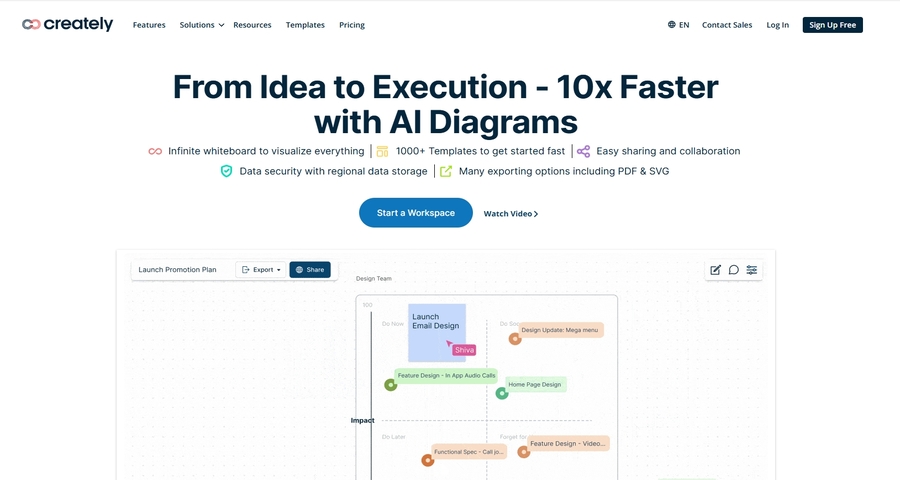
Key Features:
Pricing:
Milanote is an intuitive mind mapping tool designed for creative professionals. It helps organize ideas visually, making it ideal for designers to plan the structure and content of their web or app design projects.
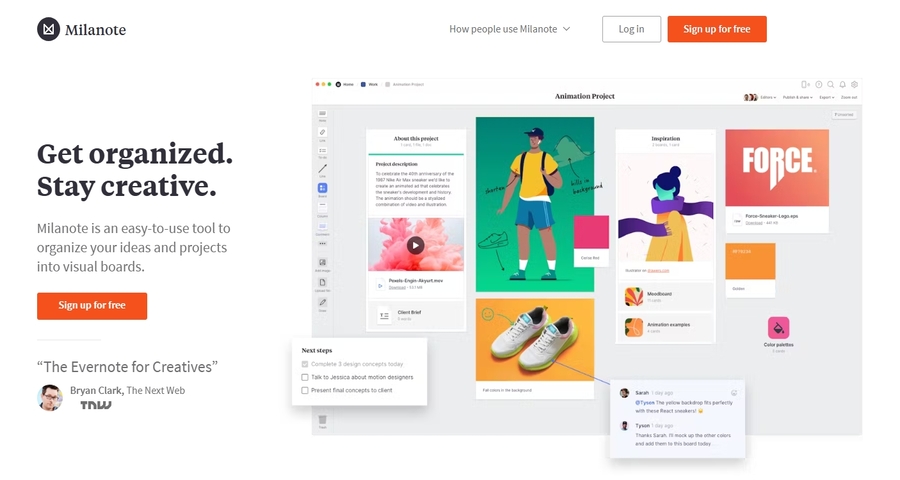
Key Features:
Pricing:
SimpleMind offers a range of customizable templates and layout options, allowing designers to create mind maps that are tailored to their project needs. Its AI-enhanced features help automatically adjust and refine the map for improved clarity.
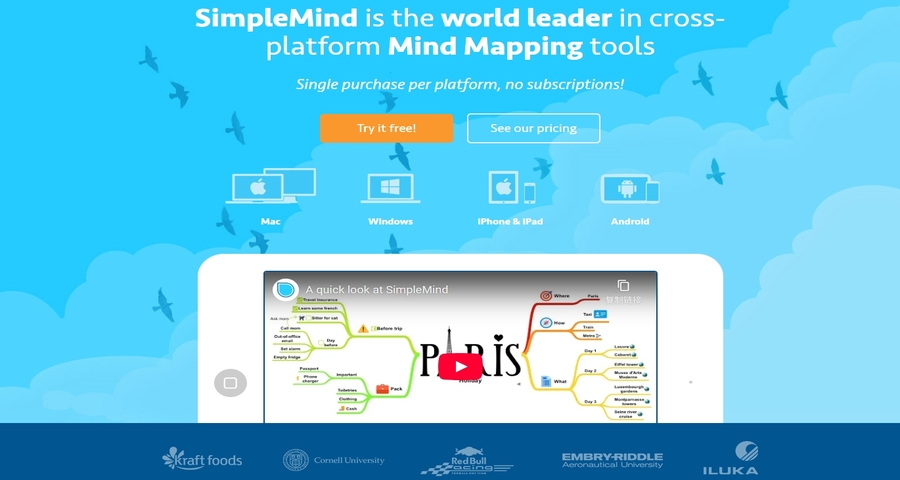
Key Features:
Pricing:
Stormboard provides a dynamic platform for team collaboration, allowing users to create mind maps, sticky notes, and idea boards. The tool’s AI capabilities help prioritize and organize ideas effectively.
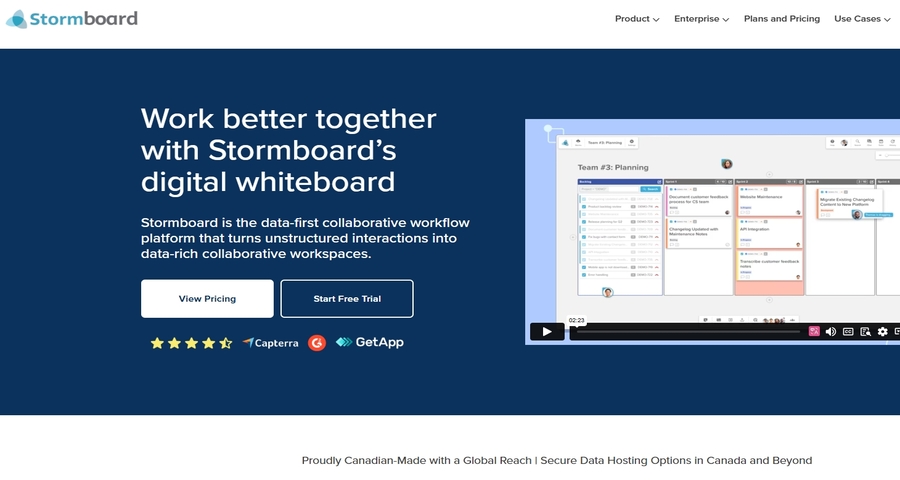
Key Features:
Pricing:
ConceptDraw is a powerful diagramming tool that integrates AI-driven features for creating professional-grade mind maps and flowcharts. It’s especially useful for web and app designers looking to map out workflows and processes.
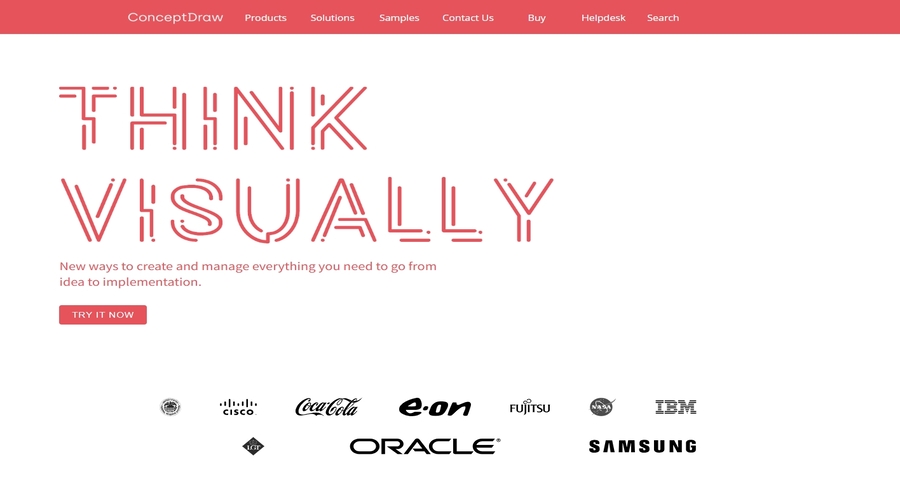
Key Features:
Pricing:
MindNode is known for its clean and visually appealing mind maps. The AI features in MindNode help to structure your ideas automatically, making it easy to go from brainstorming to prototyping in a short amount of time.
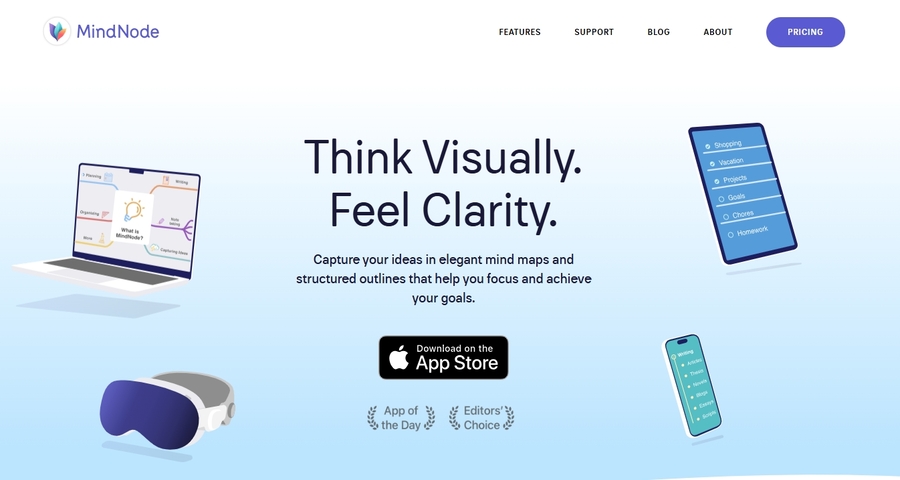
Key Features:
Pricing:
Ayoa combines mind mapping with task management features, allowing teams to map out ideas and assign tasks directly within the same platform. Its AI-powered system helps create optimized workflows.
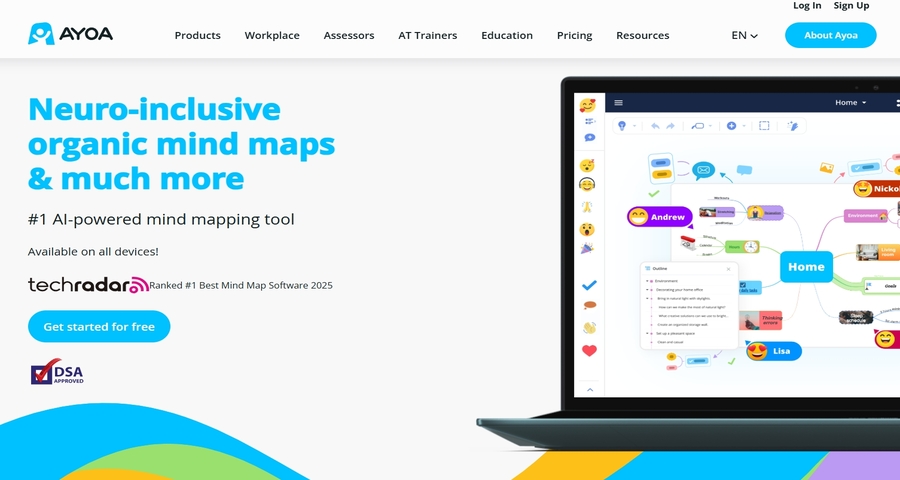
Key Features:
Pricing:
Scapple offers a straightforward mind mapping experience with AI features that help generate connections and relationships between ideas with ease. It’s perfect for quick brainstorming and initial planning stages.
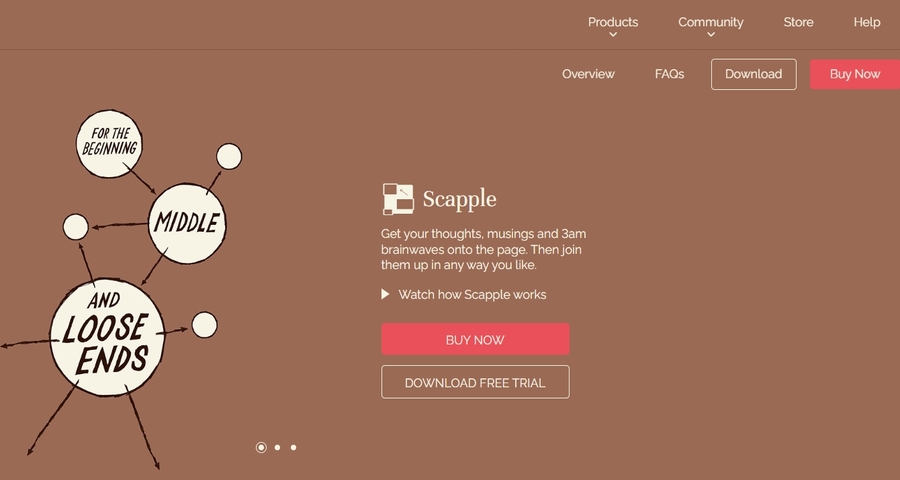
Key Features:
Pricing:
Brainstormer’s AI tools provide fast and efficient ways to organize your ideas into structured mind maps. Its intuitive interface and integration with design tools make it a useful option for design teams.
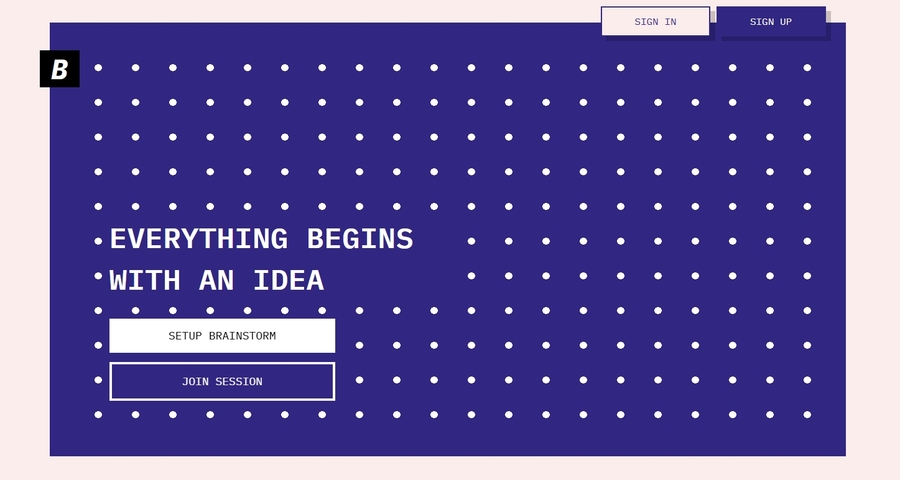
Key Features:
Pricing:
Popplet is a flexible mind mapping tool that allows designers to create visual diagrams quickly. Its AI-powered features help you map ideas efficiently and work through complex design processes.
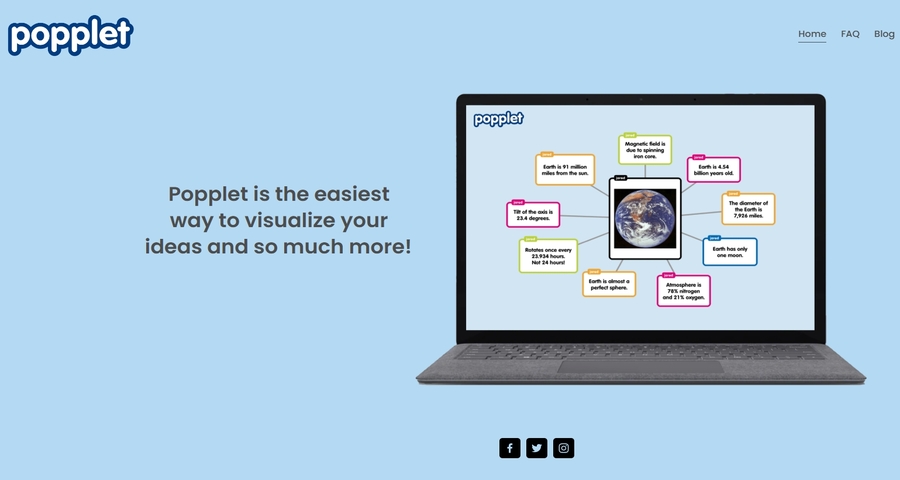
Key Features:
Pricing:
MindMaple helps organize complex data and ideas into visually rich mind maps. The AI capabilities help structure these maps based on the information provided, streamlining the ideation and planning phases.
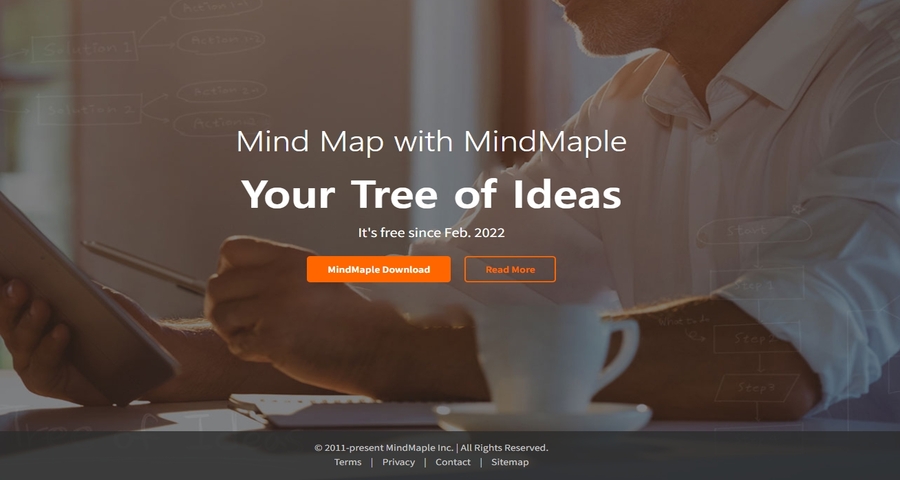
Key Features:
Pricing:
Mindly offers a visually appealing and straightforward mind mapping experience. Its simplicity and intuitive design make it easy for designers to quickly organize ideas and plan complex projects.
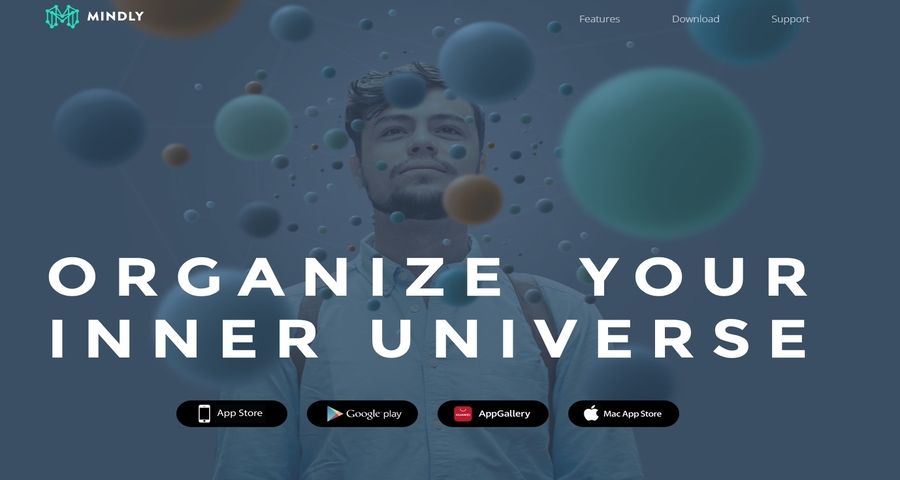
Key Features:
Pricing:
Cacoo is an excellent tool for teams working collaboratively on web and app design. Its real-time editing and AI-powered layout tools help designers structure their ideas quickly, making it easier to iterate and refine designs while maintaining alignment across teams.
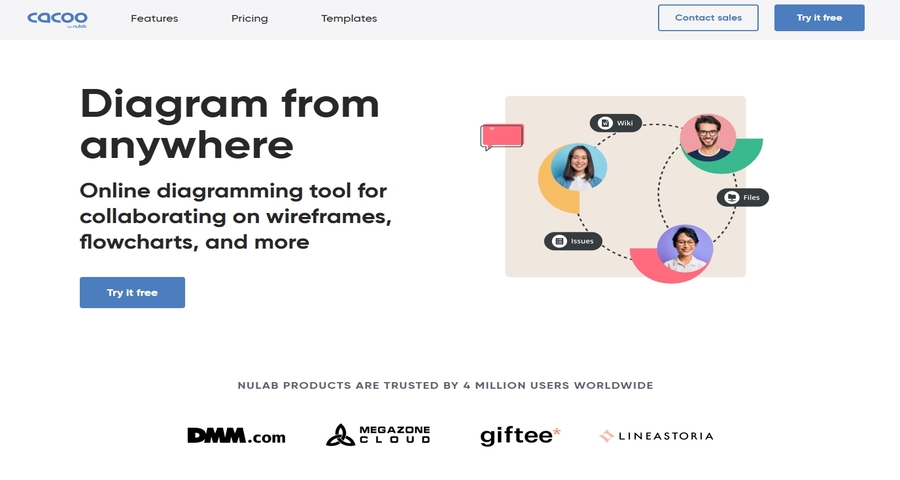
Key Features:
Pricing:
Whimsical combines mind mapping with other diagramming tools like wireframing, flowcharts, and sticky notes. Its AI features help organize complex ideas into clear, concise visual structures, aiding teams in the brainstorming and design stages.
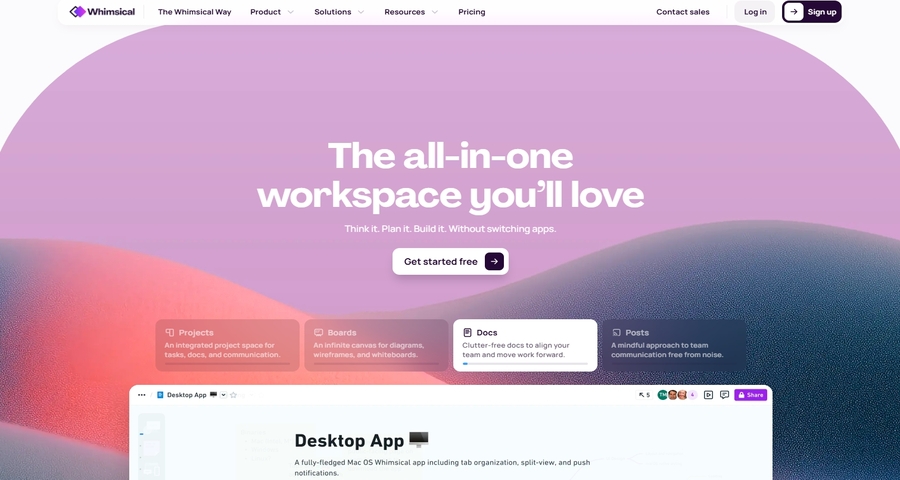
Pricing:
These 20 AI mind map generators offer powerful support for web and app designers looking to bring order to complex ideas, structure user flows, and enhance the overall design process. Whether through automatically organizing concepts or seamlessly connecting thought visualization to interactive prototyping, the right tool can profoundly improve workflow clarity and creative output. By selecting a solution that aligns with your team's needs, you can foster more innovative, collaborative, and user-aware design outcomes.
Throughout the various stages of web and app design, AI-powered mind mapping tools have emerged as essential instruments for modern design teams. They provide a structured yet flexible framework for organizing complex ideas, visualizing user journeys, and aligning team vision. By intelligently automating the structuring of concepts and facilitating real-time collaboration, these platforms help transform abstract thoughts into coherent, executable plans.
We just hope this connection of these AI toosl would help you choose the best one easily!
 Mockplus RP
Mockplus RP
A free prototyping tool to create wireframes or interactive prototypes in minutes.
 Mockplus DT
Mockplus DT
A free UI design tool to design, animate, collaborate and handoff right in the browser.
